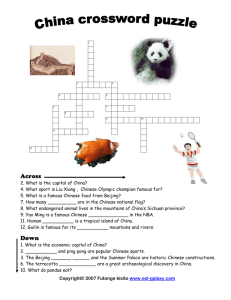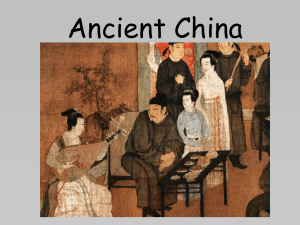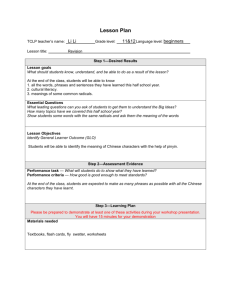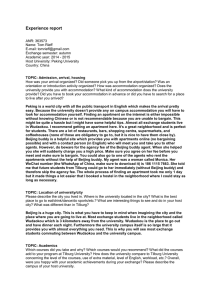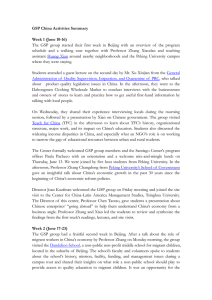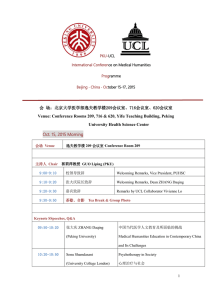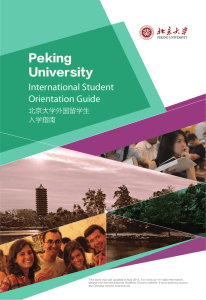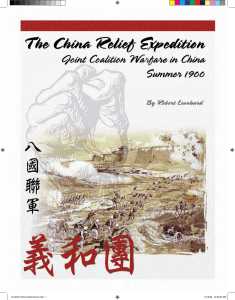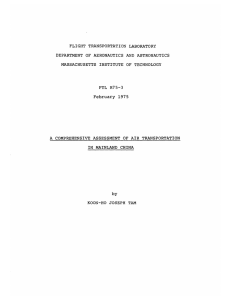THE GEOGRAPHY OF CHINA
advertisement
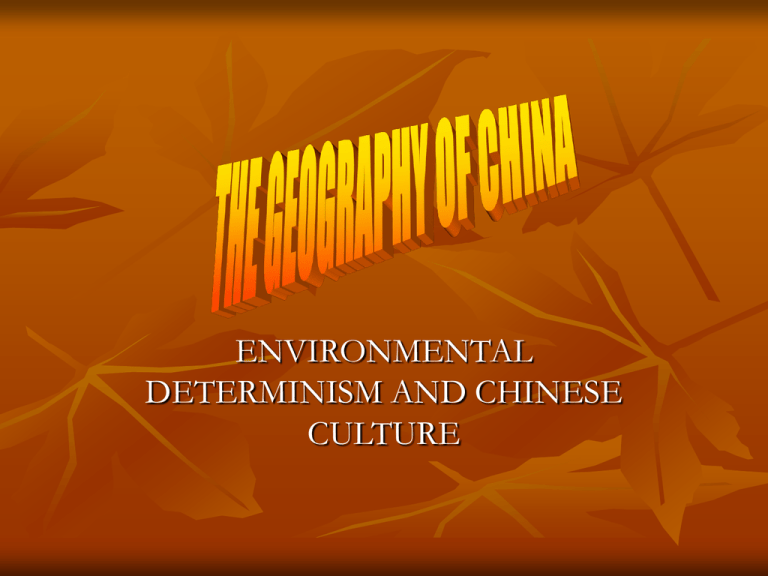
ENVIRONMENTAL DETERMINISM AND CHINESE CULTURE Isolation Middle Kingdom Climate Land Rivers Population Philosophies The Great Wall Quiz Resources China is surrounded by natural boundaries. To the North is the Gobi Desert, To the West is the Taklimakan Desert, To the South are the Himalaya Mountains, To the East is the Pacific Ocean. Isolation has had dramatic impacts on Chinese culture and history. The Chinese call their land Zhong Guo or The Middle Kingdom. The belief was that China was the center of the world. China’s latitude ranges from 19°N to 54°N, crossing the Tropic of Cancer. Climates include: Humid Sub-tropical, Continental Hot summer, Tropical Rain forest, and Alpine climates in the mountainous regions. This diversity leads to different staple crops in the North and South. Wheat is grown in the North, Rice in the South. Because of China’s limited arable land (which is concentrated in the East on the North China Plain) the Chinese developed farming techniques such as Terracing to maximize land use. China has the most pigs, goats, and chickens in the world, but relatively few cattle. Because of limited grazing area, smaller animals are necessary. Stir Frying is a cooking method developed to maximize fuel (use less trees). Food is cut into small pieces that cook quickly in a hot Wok, thereby reducing the amount of wood needed. China’s 2 greatest rivers are the Huang He (Yellow River) and the Chang Jiang (Yangtze River). The Yellow River gets its name from the yellow colored loess that blows in from the Steppes of central Asia. The Yellow River is also known as “China’s Sorrow” due to the destruction it has caused from frequent flooding. These 2 Rivers laid the foundation of Chinese civilization, providing silt and rich, fertile soil for agriculture. China has the world’s largest population: over 1.3 Billion people! Due to the topography of China, most of the population is concentrated on the East coast, leading to some of the largest, most densely populated cities on Earth - like Shanghai, Beijing, Hong Kong, and Guangzhou. Confucianism developed as a result of China’s dense populations - People needed to learn to live and work together in harmony. Daoism emphasizes living in harmony with nature. Because of internal isolation (due to natural barriers) many dialects developed in China. Qin Shi Huangdi (China’s first emperor) mandated a standardized script to unify the country. The name CHINA is taken from his name. Despite China’s natural geographic isolation, many dynasties devoted enormous time, money, and lives to build The Great Wall in an effort to maintain that isolation. WHAT DOES PEKING RAVIOLI HAVE TO DO WITH GEOGRAPHY?? Peking is the former name of China’s capital Beijing. Beijing is a northern city, where wheat is a staple crop. The dumpling is a Northern food. The Peking ravioli contains pork not beef - a result of China’s limited grazing area. It is cooked by stir frying - the cooking method developed to maximize fuel. Resources https://www.cia.gov/cia/publications/factbook/geos/ch.html http://www.mnsu.edu/emuseum/prehistory/china/ http://k12east.mrdonn.org/China.html http://www.ancientchina.co.uk/geography/home_set.html http://depts.washington.edu/chinaciv/geo/geo.htm

